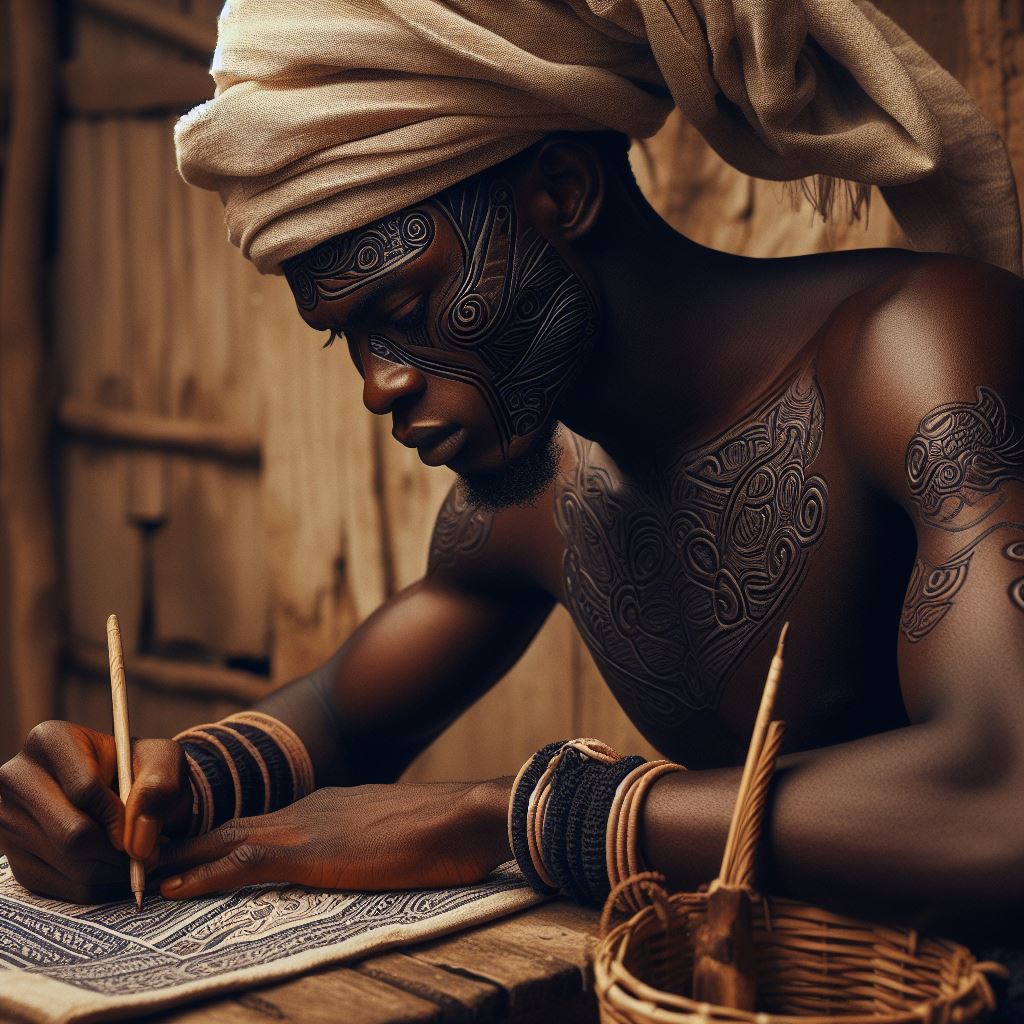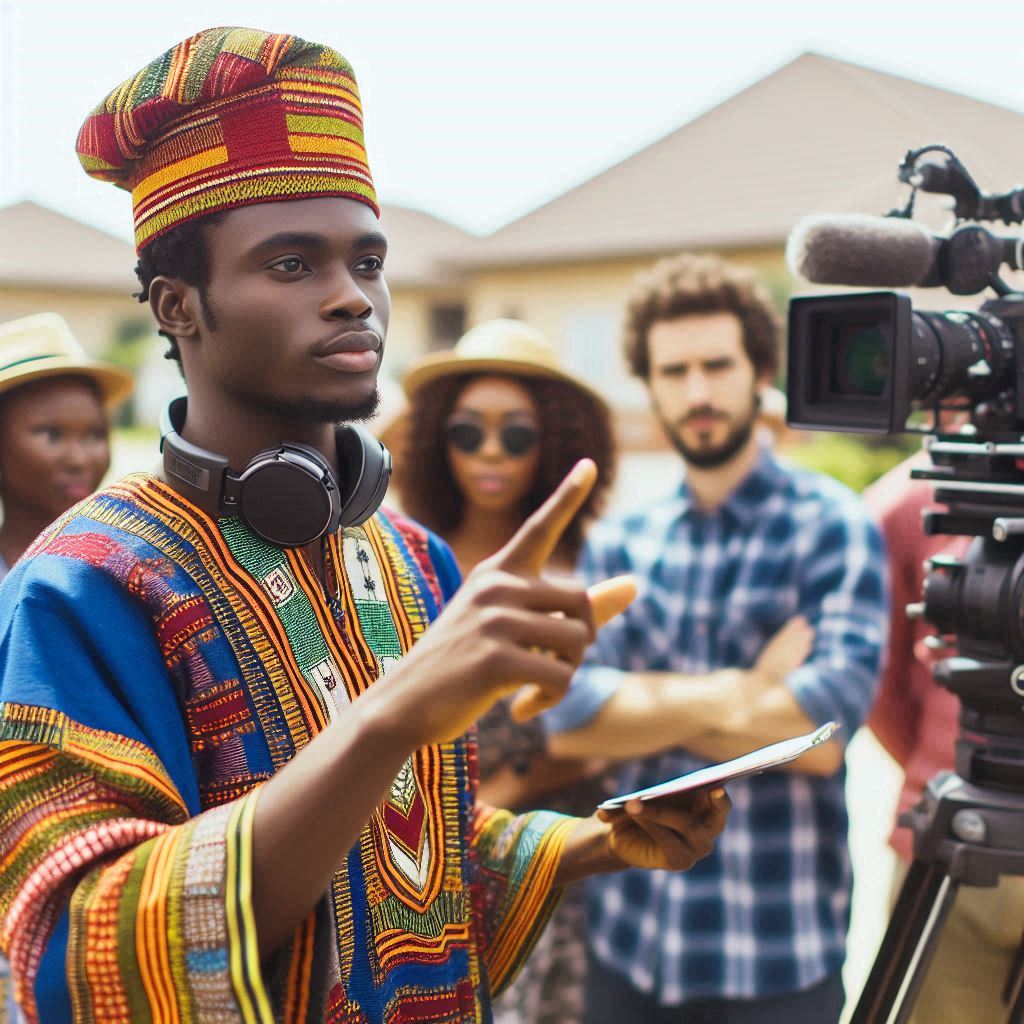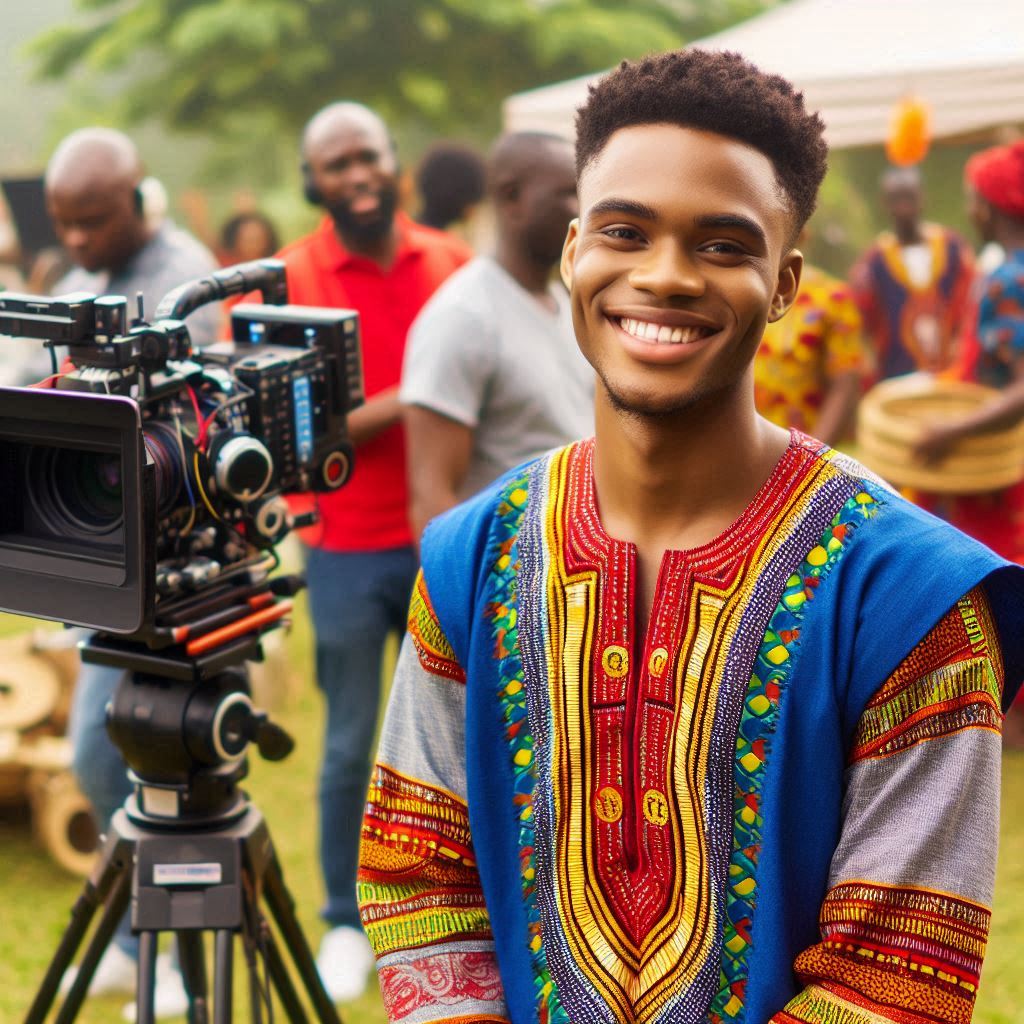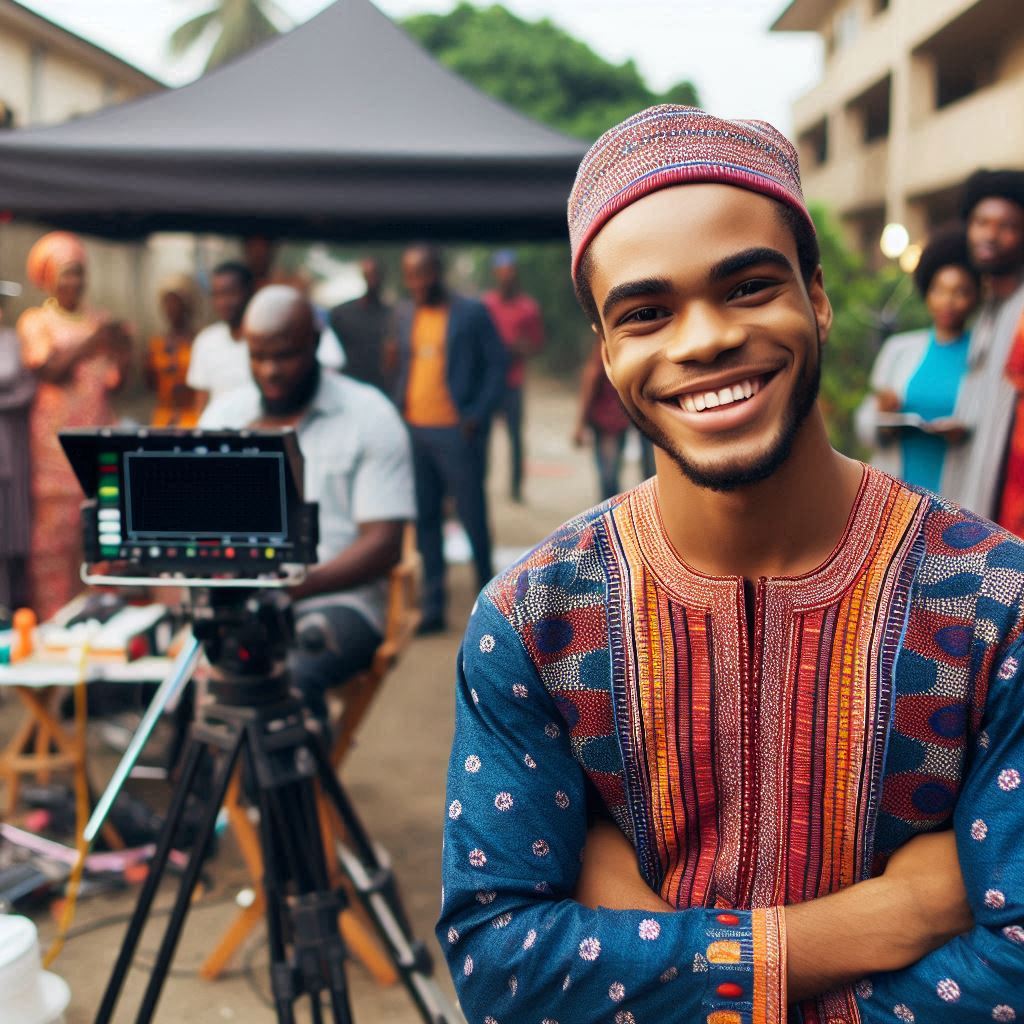Introduction
Traditional art plays a vital role in Nigerian culture, serving as a cornerstone of its rich heritage.
Significance and Importance
Traditional art preserves Nigeria’s cultural identity and heritage for future generations. It reflects the values, beliefs, and customs of various ethnic groups. Artists pass down stories of ancestors and historical events both orally and visually through their work.
Different Forms of Traditional Art
- Visual Arts: Including painting, sculpture, pottery, and textile design.
- Performing Arts: Such as dance, music, storytelling, and masquerades.
- Craftsmanship: Including beadwork, woodcarving, metalwork, and weaving.
- Architecture: Traditional building styles and designs reflect cultural and religious practices.
Each form of traditional art in Nigeria carries its own unique significance, contributing to the country’s vibrant cultural tapestry.
History of Traditional Art in Nigeria
- Ancient civilizations in Nigeria created traditional art. This art form has deep historical roots in Nigerian culture.
- Oral history and practical apprenticeships pass down artistic traditions.
- Nigerian traditional art has been influenVarious cultures, including Arab, European, and indigenous tribes, have influenced Nigerian traditional art.
Origins and Historical Development
- Nigeria is home to a diverse range of ethnic groups, each with their own unique artistic traditions.
- Traditional art forms in Nigeria include sculpture, painting, textiles, pottery, and metalwork.
- Various cultures, including Arab, European, and indigenous tribes, have influenced Nigerian traditional art.
Passing Down Through Generations
- Families often teach traditional art skills. Master artisans also pass down these skills through apprenticeships.
- Traditional artists ensure they preserve and pass on cultural heritage by transmitting their techniques.
- Young artists learn by observing and practicing under the guidance of experienced artisans.
Influence of Other Cultures
- Nigeria has a long history of trade and interactions with other cultures, leading to artistic exchanges.
- Islamic art has influenced Nigerian traditional art through the introduction of calligraphy and geometric patterns.
- European colonization also had an impact on Nigerian art, with new materials and techniques being introduced.
In short, the history of traditional art in Nigeria is rich and diverse, with influences from various cultures contributing to the development of unique artistic styles.
The importance of passing down traditional art forms through generations ensures that Nigerian cultural heritage continues to thrive in the modern world.
Read: How to Open a Beauty Salon in Nigeria: Step-by-Step
Types of Traditional Art in Nigeria
- Pottery: Pottery in Nigeria is both functional and decorative, used for everyday items and ceremonial purposes. It plays a significant role in preserving cultural heritage.
- Weaving: Nigerian weavers create intricate and colorful textiles using traditional methods passed down through generations. These fabrics are often used in clothing and ceremonial attire.
- Woodcarving: Woodcarving is a traditional art form in Nigeria, with skilled craftsmen carving intricate designs on furniture, masks, and sculptures. It is deeply rooted in Nigerian culture.
- Beadwork: Beadwork is a popular traditional art form in Nigeria, with beads being used to create intricate jewelry, clothing, and decorative pieces. Each bead design carries symbolism and meaning.
Cultural Significance of Each Type of Traditional Art
- Pottery: Pottery symbolizes the connection to the earth and the ancestral spirits, as it is made from natural materials found in the environment. It is used in rituals and ceremonies
- Weaving: Weaving represents creativity and skill, showcasing the weaver’s artistic expression and cultural knowledge. Textiles are often woven with symbols and patterns that hold cultural significance.
- Woodcarving: Woodcarving is a form of storytelling, with each carved piece telling a unique narrative or representing a specific aspect of Nigerian culture, history, or mythology.
- Beadwork: Beadwork is a form of adornment and cultural expression, with each bead color and design carrying symbolic meaning. It is often used in ceremonies to convey messages or status.
Examples of Famous Traditional Art Pieces in Nigeria
- Nok Terracotta Figures: The Nok terracotta figures are ancient sculptures dating back to 500 BC, showcasing the artistic skill and cultural heritage of the Nok people.
- Igbo Ukwu Bronze Artifacts: The Igbo Ukwu bronze artifacts are intricate bronze castings dating back to the 9th century, showcasing the artistic prowess of the Igbo people.
- Benin Bronzes: The Benin Bronzes are a collection of bronze sculptures and plaques created by the Edo people of Benin City, depicting their rich history and cultural traditions.
- Aso Oke Fabrics: Aso Oke fabrics are handwoven textiles from the Yoruba people, known for their vibrant colors, intricate patterns, and cultural significance in Nigerian ceremonies and celebrations.
These traditional art forms in Nigeria are not only aesthetically pleasing but also serve as a way to preserve and celebrate the rich cultural heritage of the Nigerian people. Each piece tells a story, reflects deep-rooted traditions, and contributes to the cultural identity of Nigeria.
Read: Communication Arts and Social Media Influence
Role of Traditional Art in Nigerian Culture
Traditional art in Nigerian culture serves as a powerful tool for expressing the rich cultural identity and values of the diverse ethnic groups in the country.
Usage in Ceremonies, Rituals, and Celebrations
In Nigeria, traditional art is intricately woven into ceremonies, rituals, and celebrations, serving as a visual representation of the community’s beliefs and practices.
- Artifacts such as masks, sculptures, and textiles are used in rituals to invoke ancestral spirits or gods.
- Drumming, dancing, and storytelling are also integral parts of traditional ceremonies, often accompanied by visual arts.
- Special occasions like weddings, funerals, and harvest festivals are infused with traditional art forms to signify cultural significance
Reflection of Beliefs, Customs, and Traditions
Traditional art in Nigeria reflects the deep-rooted beliefs, customs, and traditions that have been passed down through generations, preserving the cultural heritage of the people.
- Sculptures of deities and mythical figures depict the spiritual beliefs of various Nigerian tribes.
- Pottery, beadwork, and weaving showcase the artistic skills and traditional craftsmanship of the different communities.
- Symbolism in traditional art often conveys messages about societal norms, values, and historical events.
Integration with Modern Society
While traditional art forms have strong ties to Nigerian culture, they are also adapting to modern influences, merging traditional techniques with contemporary styles to appeal to a wider audience.
- Young artists are incorporating traditional motifs and themes into digital art, fashion design, and performance art.
- Art galleries and cultural centers are showcasing traditional art alongside modern works to promote cultural exchange and artistic innovation.
- Traditional art is increasingly recognized as a valuable cultural asset that contributes to Nigeria’s vibrant artistic scene and tourism industry.
Read: Innovations in Language Arts Teaching Methods
Economic Impact of Traditional Art
When it comes to the economic impact of traditional art in Nigeria, it is clear that it plays a significant role in shaping the livelihoods of artisans and their communities. Let’s delve deeper into the economic importance of traditional art in Nigeria:
Analyze the Economic Importance
- Traditional art in Nigeria serves as a source of revenue for many artisans.
- It contributes to the overall economy by attracting tourists and generating income.
- The sale of traditional art pieces provides a sustainable income for artisans.
- Exporting traditional art to international markets brings in foreign exchange.
Contribution to Artisans and Communities
- Artisans rely on traditional art to support themselves and their families financially.
- It fosters community development by creating employment opportunities locally.
- Traditional art preserves cultural heritage while providing economic benefits.
- Communities with a strong tradition of art benefit from increased tourism.
Potential for Income and Employment
- Traditional art has the potential to be a lucrative source of income for Nigerians.
- It can create employment opportunities for youth and women in the country.
- Training programs in traditional art can empower individuals to become skilled artisans.
- Government support and investment in the traditional art sector can boost economic growth.
To sum it up, traditional art in Nigeria not only holds cultural significance but also drives economic growth by providing income and employment opportunities for artisans and their communities.
By recognizing and supporting the economic value of traditional art, Nigeria can further harness its potential for sustainable development.
Read: Exploring Semiotics in Communication Arts

Find Out More: Importance of Preserving Indigenous Nigerian Languages
Find Out More: Studying Anthropology: Tips for Nigerian Students
Challenges Facing Traditional Art in Nigeria
One of the biggest challenges facing traditional art in Nigeria is the impact of modernization.
Modern technologies and ways of living are changing the traditional practices and beliefs.
This shift is putting traditional art forms at risk of being lost or forgotten.
Additionally, globalization has introduced new ideas and art forms that can overshadow traditional Nigerian art.
The obstacles and threats to the preservation and promotion of traditional art in Nigeria
Another obstacle is the lack of support for traditional artists in Nigeria.
Many artists struggle to make a living from their art due to limited resources and opportunities.
This lack of support discourages younger generations from carrying on the tradition of traditional art.
To address these challenges, there must be a concerted effort to preserve and promote traditional art in Nigeria.
One solution is to provide more funding and resources for traditional artists to continue their work.
This could include grants, scholarships, and exhibition opportunities to showcase their art to a wider audience.
Furthermore, educational programs should be established to teach younger generations about the importance of traditional art.
By instilling a sense of pride and appreciation for their cultural heritage, the tradition of Nigerian art can be passed down through generations.
Possible solutions to ensure the survival and sustainability of traditional art in Nigeria
Collaborations with other countries and organizations can also help to raise awareness and support for traditional Nigerian art.
By showcasing the beauty and significance of these art forms on a global stage, traditional art can gain more recognition and respect.
Overall, it is crucial to address the challenges facing traditional art in Nigeria in order to ensure its survival and sustainability.
Through support, education, and collaboration, traditional art can continue to thrive and be celebrated for years to come.
Delve into the Subject: Modern Trends in Nigerian Fine and Applied Art
Learn More: Film Production Internships and Opportunities in Nigeria
You Might Also Like: How to Write a Winning Film Script in Nigeria
Contemporary Interpretations of Traditional Art
Traditional art in Nigeria has always been a significant aspect of the country’s cultural identity, reflecting its rich history and diverse ethnic groups.
However, as Nigerian society evolves and modernizes, traditional art is also undergoing a transformation to stay relevant in contemporary times. This section will delve into how traditional art is adapting to modern influences and the role of innovation in preserving its legacy.
Contemporary Interpretations of Traditional Art
Explore how traditional art is evolving and adapting to modern influences in Nigeria:
In recent years, traditional Nigerian art has been reimagined and reinterpreted to resonate with younger generations and reflect the changing social landscape.
Artists are incorporating contemporary themes and materials while still paying homage to traditional techniques and motifs. This fusion of old and new creates a sense of continuity while allowing for creative expression in the present context.
How contemporary artists are incorporating traditional art techniques and motifs into their work
Many contemporary Nigerian artists are revisiting traditional art forms such as beadwork, pottery, textiles, and wood carving in their practice.
By infusing these traditional techniques with modern interpretations, artists are revitalizing these ancient art forms and giving them a new lease on life.
This approach not only preserves cultural heritage but also provides a platform for innovation and experimentation within the art community.
The importance of blending tradition with innovation to keep traditional art relevant in Nigerian society
The fusion of tradition and innovation is crucial in ensuring the longevity and relevance of traditional art in Nigeria. By embracing new technologies and artistic practices, traditional artists can reach a broader audience and adapt to changing societal norms.
This evolution of traditional art not only preserves the past but also paves the way for its continued appreciation and celebration in contemporary Nigerian culture.
It is through this dynamic synthesis of old and new that traditional art can thrive and remain an integral part of Nigerian identity.
Generally, the evolution of traditional art in Nigeria reflects a delicate balance between preserving cultural heritage and adapting to modern influences.
By blending tradition with innovation, Nigerian artists are able to breathe new life into ancient art forms and ensure their relevance in a rapidly changing society.
It is through this creative dialogue between the past and present that traditional art continues to flourish and resonate with audiences both in Nigeria and beyond.
Uncover the Details: Comparing English Language and Communication Degrees
Discover More: Art Communities and Networks in Nigeria
Find Out More: Anthropology and Environmental Issues in Nigeria
Conclusion
Traditional art in Nigerian culture plays a vital role in preserving and showcasing the rich heritage of the country. From intricate wood carvings to colorful beadwork, these art forms are not just decorative but also carry deep cultural meanings and stories.
As discussed in this blog post, traditional art serves as a form of communication, education, and identity for the Nigerian people.
Despite the influence of modernization, traditional art continues to be an essential part of Nigerian culture, connecting the past with the present and passing down knowledge from generation to generation.
It is through traditional art that the history, values, and beliefs of the Nigerian people are preserved and celebrated.
Therefore, it is crucial for us to appreciate and support traditional art as a vital component of Nigeria’s cultural heritage.
By recognizing the enduring significance of traditional art, we can contribute to the preservation and promotion of these valuable art forms. Let us celebrate and cherish the beauty and cultural richness that traditional art brings to Nigerian society.




